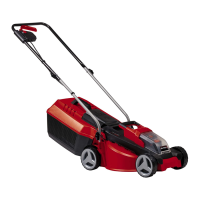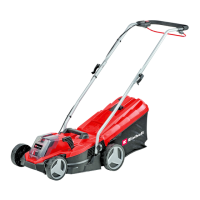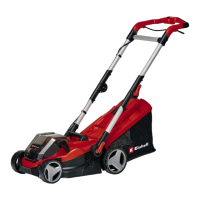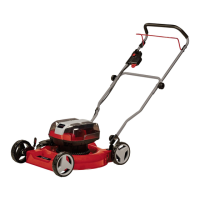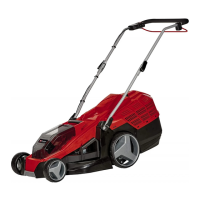Information on chargers and the charging
Please check the data marked on the rating
plate of the battery charger.
nect the battery charger to a power supply
with the voltage marked on the rating plate.
Protect the battery charger and its cable from
cables repaired without delay by a quali
Keep the battery charger, batteries and the
cordless tool out of children’s reach.
Do not use damaged battery chargers.
Do not use the supplied battery charger to
charge other cordless tools.
In heavy use the battery pack will become
Allow the battery pack to cool to room
temperature before commencing with the
charging.
Do not over-charge batteries.
ceed the maximum charging times.
charging times only apply to discharged
batteries.
Frequent insertion of a charged
or partly charged battery pack will result in
over-charging and cell damage.
batteries in the charger for days on end.
Never use or charge batteries if you sus-
pect that the last time they were charged
was more than 12 months previously
re is a high probability that the battery pack
has already su
Charging batteries at a temperature below
10°C will cause chemical damage to the cell
Do not use batteries which have heated du-
ring the charging process, as the battery cells
may have su
Do not use batteries which have su
curvature or deformation during the charging
process or which show other non-typical sym-
ptoms (gassing, hissing, cracking,…)
Never fully discharge the battery pack (re-
commended depth of discharge max.
A complete discharge of the battery pack will
lead to premature ageing of the battery cells.
Never charge the batteries unsupervised.
Protection from environmental in
Wear suitable work clothes.
Protect your cordless tool and the battery
charger from moisture and rain.
and rain can cause dangerous cell damage.
Do not use the cordless tool or the battery
charger near vapors and in
Use the battery charger and cordless tools
only in dry conditions and an ambient tempe-
rature of 10-40°C.
Do not keep the battery charger in places
where the temperature is liable to reach over
In particular, do not leave the battery
charger in a car that is parked in the sunshine.
Protect batteries from overheating.
loads, over-charging and exposure to direct
sunlight will result in overheating and cell
damage.
Never charge or work with batteries
which have been overheated – replace them
immediately if possible.
Storage of batteries, battery chargers
and cordless tools.
your cordless tool only in dry places with an
ambient temperature of 10-40°C.
lithium-ion battery pack in a cool, dry place at
a temperature of 10-20°C.
humidity and direct sunlight.
charged batteries in storage (charged at least
40%).
Prevent the lithium-ion battery pack from free-
Battery packs which were stored below
0°C for more than 60 minutes must be dispo-
sed of.
When handling batteries beware of electro-
static charge: Electrostatic discharges cause
damage of the electronic protection system
and the battery cells.
Avoid electrostatic char-
ging and never touch the battery poles.
Anl_SA_GE_CM_18_30_Li_Solo_ARG.indb 25
